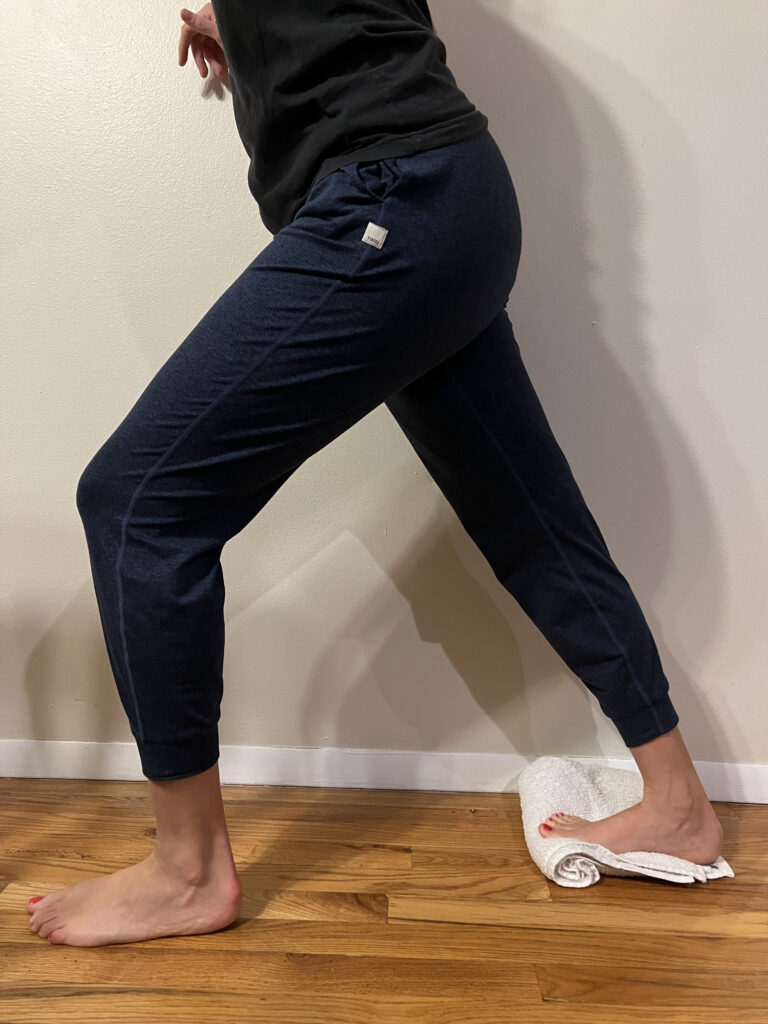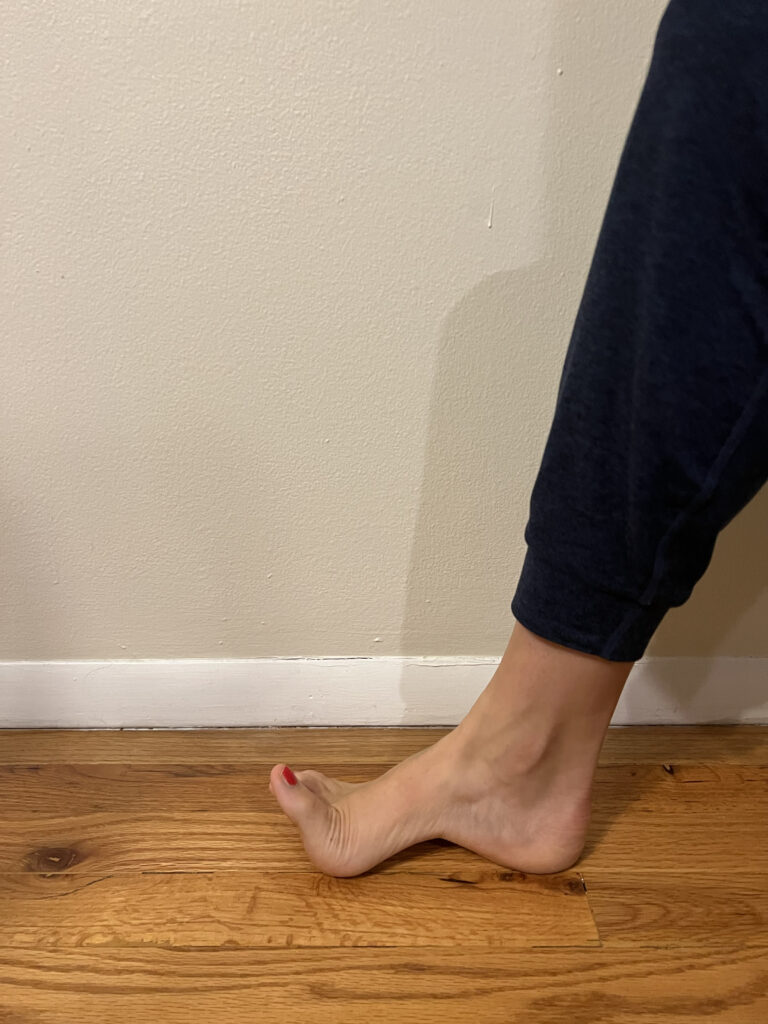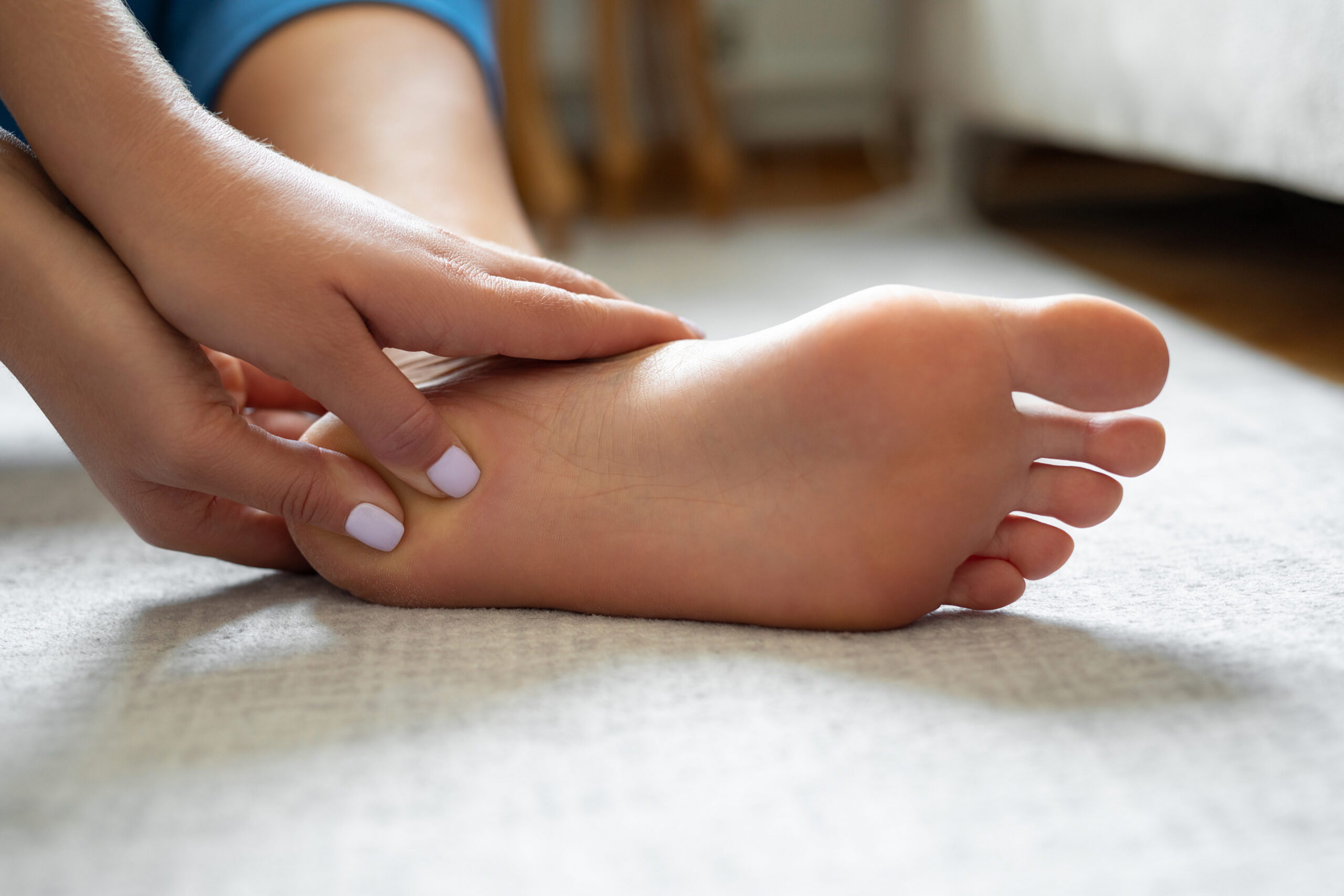How to Identify and Treat Plantar Fasciitis
Amber Tacy, a personal trainer and the founder of Dancers Who Lift, an online strength training and nutrition program geared toward dancers, first experienced plantar fasciitis when she was in college. “I remember my feet screaming at 8 in the morning, and I was supposed to go through a 90-minute barre, and then modern and rehearsal right after that, and then another technique class,” she says. “I was distraught because I couldn’t imagine putting weight on my foot.”

Tacy’s experiences aren’t unusual, especially for dancers who are experiencing a dramatic ramp up in their activity level. Joshua Metzl, an orthopedic sports medicine physician at UCHealth Steadman Hawkins Clinic who works with dancers at Colorado Ballet, says that increasing the amount of time spent training—and the resulting potential for overuse—is the leading cause of plantar fasciitis among dancers.
What Is Plantar Fasciitis?
Plantar fasciitis is an inflammation of thick tissue on the bottom of the foot called plantar fascia. It often shows up in dancers as pain in the heel, especially when doing weight-bearing exercise. Metzl notes that it’s often most painful first thing in the morning, and symptoms can ebb and flow throughout the day.
In addition to a sudden increase in activity levels, plantar fasciitis can also be triggered by changes in footwear, like switching from pointe to flat shoes. The quality of the studio floor or performance surface can have an impact. Outside of the studio, walking more than normal and/or on different types of surfaces can lead to plantar fasciitis.
Although plantar fasciitis is common amongst dancers, there are other conditions that could be causing similar pain. Metzl explains that the bones of the feet could also be to blame, with common bone-related plantar fasciitis doppelgangers instead being calcaneal stress fractures and calcaneal apophysitis, an inflammation of the growth plate in a younger dancer’s heel. An X-ray can help determine the root cause of this kind of foot pain.
Treatment and Healing

Courtesy CU School of Medicine.
Treatment for plantar fasciitis usually involves working with a physical therapist to establish a daily stretching and strengthening program for the plantar fascia, Metzl says, adding that if the condition is more chronic and doesn’t respond to initial treatment, an MRI, corticosteroid injection, and/or a platelet-rich plasma injection, which acts as a localized anti-inflammatory, might be used as well.
At the onset of symptoms, Tacy recommends taking over-the-counter anti-inflammatories to ease pain, as well as employing gentle massage techniques. She says that icing—either by simply applying an ice pack to the bottom of the foot or by gently rolling out the sole with a frozen water bottle—can be helpful.
It’s also important to be strategic about daily footwear. Metzl says wearing orthotics or arch supports in your shoes can relieve symptoms by off-loading pressure from the plantar fascia. Tacy found that choosing shoes with a wide toe, which better mimics the natural shape of the foot, proved helpful. In more severe cases, a walking boot might also be recommended. Although plantar fasciitis does not always necessitate time off from dance, don’t underestimate the power of rest to ease and prevent pain. “There’s a really great saying: ‘If you don’t choose when to rest your body, your body will choose for you,’ ” Tacy says.
It’s All Connected
When plantar fasciitis is severe, dancers might decide to modify their technique to mitigate pain. Although this might feel like a way to muscle through class or rehearsal, both Metzl and Tacy agree that this approach can cause more issues down the line. “The term we use in orthopedics is ‘kinetic chain’—all of these structures in the body are interconnected,” Metzl says. This means that untreated plantar fasciitis has the potential to lead to pain in other areas of the body, like the knees, calves, hips, and low back.
When Tacy was dancing professionally in New York City, she suffered a serious injury that sidelined her for months. Although the injury involved an accident with a set piece and wasn’t directly related to plantar fasciitis, she believes that imbalances caused by her foot pain were a contributing factor to injury severity and recovery time. “As soon as I graduated college and got my first job, lo and behold, the foot that was most affected by plantar fasciitis was the one that I injured,” she says. “Looking back, I can see how it’s all connected. If I had taken care of my plantar fasciitis and strengthened and healed my foot in the correct way, I don’t think that my injury later would have been as severe or would have needed as much care.”
Two Stretches for Plantar Fasciitis
Joshua Metzl, an orthopedic sports medicine physician who works with Colorado Ballet dancers, recommends these two stretches for dancers suffering from plantar fasciitis.

Calf stretch with a towel roll
- Roll one edge of a towel.
- Stand on the towel with one foot, with the rolled portion under your toes and metatarsal and the flat portion under your heel.
- Assume a small lunge position, with the back leg straight and on the towel, and the front leg slightly bent.
FHL tendon glide

The flexor hallucis longus (FHL) tendon connects the calf to the big toe and plays a big role in pointing the toes and standing on pointe.
- Place your feet flat on the floor.
- Keeping the heel and ball of your foot in contact with the floor, lift the toes.





